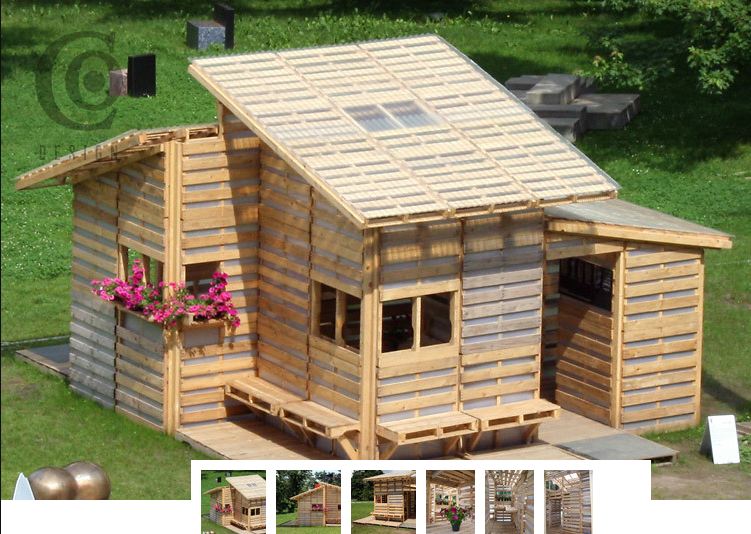A House For Refugees, Made From 100 Shipping Pallets
I-Beam turns cheap, discarded material into transitional structures for those who have lost their homes. Here’s a mind-boggling statistic: 84% of the world's refugees could be housed with a year's worth of recycled American pallets--those wooden platforms used for shipping crates. That figure inspired the Brooklyn-based firm I-Beam to design the Pallet House, a 250-square-foot low-cost shelter constructed of 100 discarded pallets. Nearly 21 million pallets end up in landfills every year; if repurposed, they could house more than 40,000 refugees. And since the pallets are designed for transport, they can first be used for carrying shipments of other types of aid, including food and medicine. Once onsite, it takes a five-person team less than a week to assemble and nail the modules together using basic hand tools. Tarps or corrugated roofing could serve as temporary measures to prevent water from penetrating the interior until enough locally available materials like dirt, wood, and thatch can be gathered to thoroughly cover the exterior and fill the wall cavities. In addition to having the pleasing aesthetic of a garden shed, the Pallet House is far sturdier and more permanent than the tent structures common in refugee camps, where displaced individuals stay an average of seven years. I-Beam has built prototypes in New York, Indiana, and at the Architecture Triennial in Milan and is currently working on housing for those who lost their homes during the earthquake in Haiti and the floods in Pakistan.

